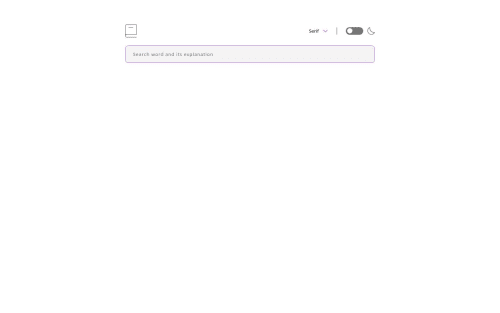responsive react web app

Solution retrospective
This my first self-made react app in which I learned so much about react working under the hood, especially how react use re-render techniques. I understood how use much more efficient react re-render avoid techniques such as callback and memo methods. With the help of react I managed to create a simple web app in much less time than with using vanilla JS. I also went beyond the original tasks for this challenge and add the option of saving words in local storage and extract the saved words with their pronunciation, explanation, and type to the excel file via sheet.js. In order to check your saved words you can press to the book svg on top left bottom of the page and thats all 😁
In the future I want to make website more beautiful with using smooth animations on it😍😁.
Please, give me a star in GitHub, if you really like my website. Thanks in advance❤️😁
What challenges did you encounter, and how did you overcome them?The biggest challenge for me was making react not to re-render all components due to each change. Now I understood, how it was important to create a plan for react app and its tree before starting to code itself🥲
What specific areas of your project would you like help with?Animations! Maybe someone have some ideas or library suggestions (except anime.js, because I already know it😅) for making my website much more beautiful:)
Please log in to post a comment
Log in with GitHubCommunity feedback
- @LejNur
Great job! I really like your solution. I myself am starting challenges in react and I know how react can confuse you at the beginning especially with re-rendering.. Keep up the good work!
Join our Discord community
Join thousands of Frontend Mentor community members taking the challenges, sharing resources, helping each other, and chatting about all things front-end!
Join our Discord